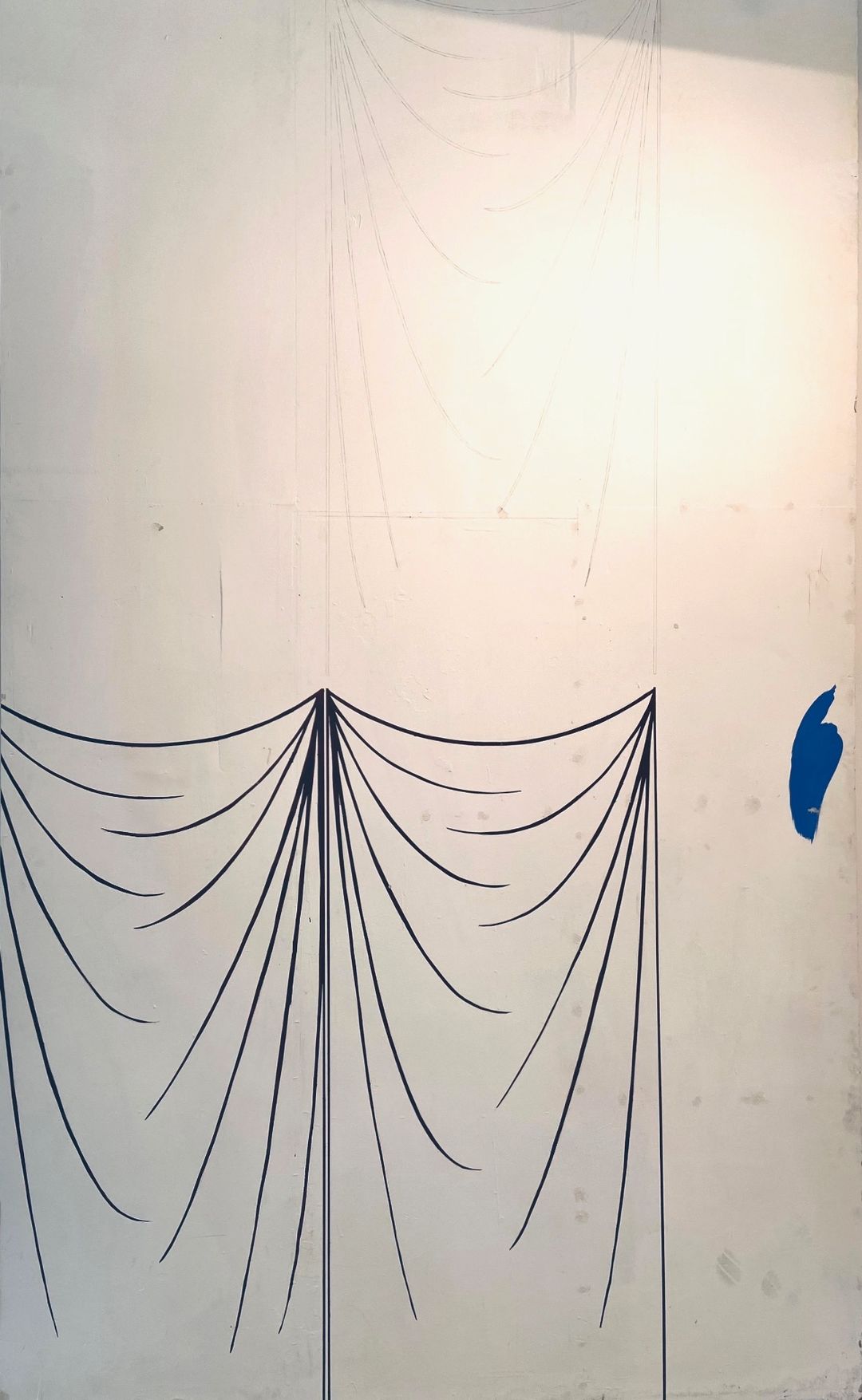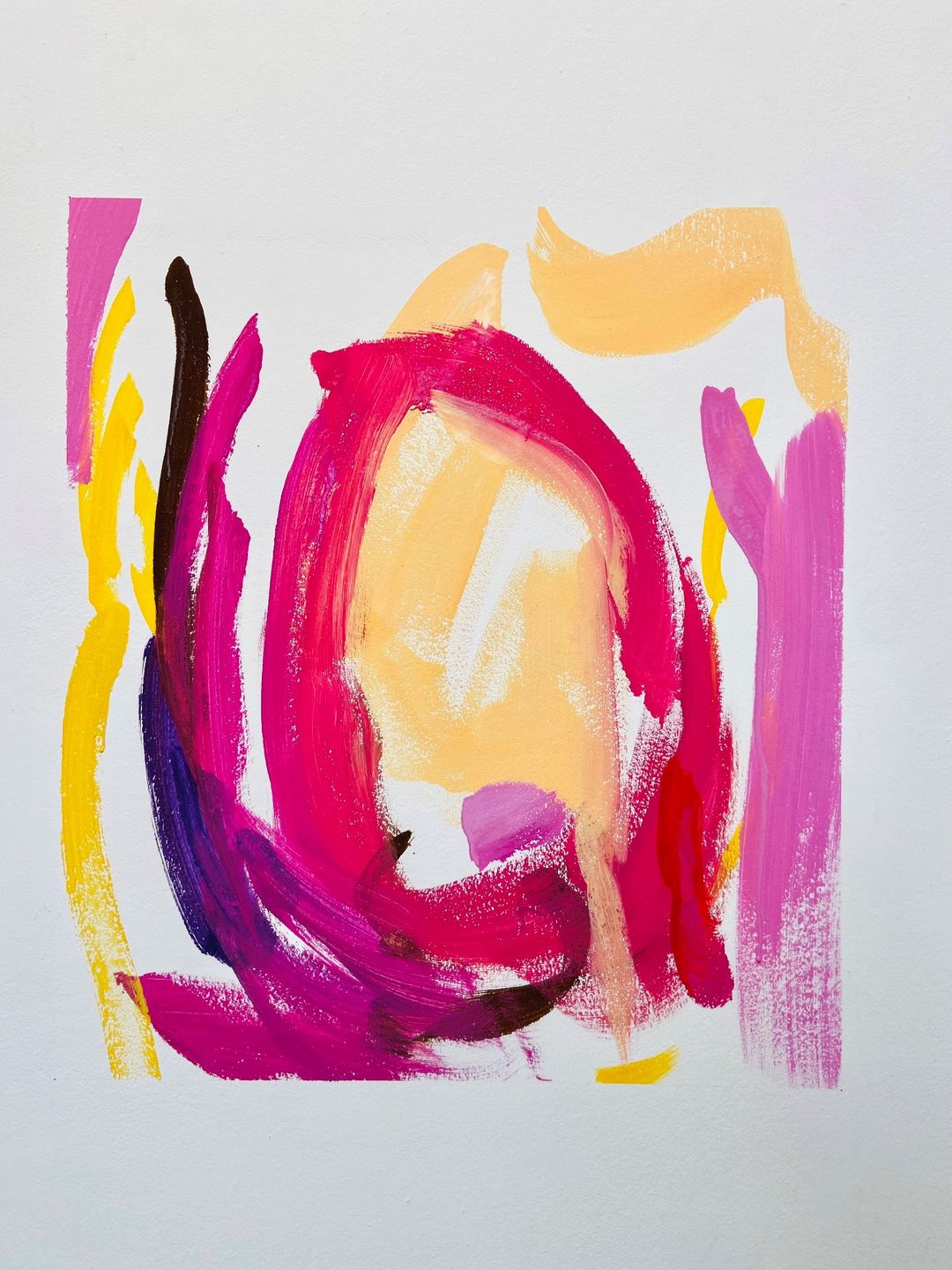Nap, sit, lap, backlit
Of the seven artworks that make up this exhibition, five are large and lustrous photos. In these images, Peggy Franck continues pursuing what has become a signature strategy of hers: fusing the rhetorics of painting with those of photography. The Dutch artist executes parti-coloured compositions in acrylic on sheets of highly reflective material and hangs them in various locations throughout her studio before photographing them. In the resultant images (all dated 2022) our focus is drawn to Franck’s loose, liberally applied brushstrokes. These gestural traces and spontaneous daubs in a predominantly warm palette have been substantially enlarged, and made more luminous and vivid, via the photographic processes. What were originally small paintings are transformed in scale and complemented by tantalising environmental details; rays of sunlight falling across the surfaces, illegible forms reflected in the metallic sheen.
In addition to ‘staging’ her own artworks, Franck has a penchant for conflating sites of production and display. This is demonstrated here in a street-facing anteroom off the main gallery via a small, florid mural in fuschia and magenta gouache is painted directly onto the wall. Although diminutive in comparison to the nearby photos, this mural – which will be erased when the exhibition concludes – is the only instance here in which Franck’s brushstrokes are presented in an unmediated way; without the enhancement or amplification of a lens. The aptly titled Come Alive appears to be the index of one rapidly executed action, and is imbued with spontaneous vitality and panache.
There is an alluring quality to this show that stems primarily from an ambiguity regarding the status of its constituents; essentially an amalgamation of self-reflexive photo documentation and auratic artefacts. The largest piece on display here, entitled ?01013!030422 (I), is comprised of a plywood panel extracted from its original location: part of a partition wall in Franck’s studio. The surface is adorned with an elegant motif in black acrylic resembling a swag of curtain or theatrical drape. This is apposite, for Franck’s process is fundamentally performative and predicated upon offering us glimpses into interiors – her studio, perhaps even her mind – that would usually be concealed from view.

































































































































































































































